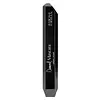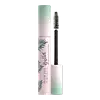What's inside
What's inside
 Key Ingredients
Key Ingredients

 Benefits
Benefits

 Concerns
Concerns

 Ingredients Side-by-side
Ingredients Side-by-side

Water
Skin ConditioningParaffin
PerfumingButylene Glycol
HumectantPalmitic Acid
EmollientPolyacrylate-21
Copernicia Cerifera Wax
Stearic Acid
CleansingSteareth-20
CleansingTriethanolamine
BufferingCetearyl Alcohol
EmollientOryza Sativa Bran Wax
Skin ConditioningTribehenin
EmollientSilica
AbrasiveSteareth-2
EmulsifyingAcacia Senegal Gum
MaskingPhenoxyethanol
PreservativeBis-Diglyceryl Polyacyladipate-2
EmollientPolybutene
Hydroxyethylcellulose
Emulsion StabilisingTrideceth-6 Phosphate
EmulsifyingCaprylyl Glycol
EmollientEthylhexylglycerin
Skin ConditioningGlycerin
HumectantMyristic Acid
CleansingAllantoin
Skin ConditioningDipropylene Glycol
HumectantLauric Acid
CleansingGlyceryl Caprylate
EmollientTocopheryl Acetate
AntioxidantPolymethylsilsesquioxane
1,2-Hexanediol
Skin ConditioningMyristoyl Pentapeptide-17
Skin ConditioningBenzoic Acid
MaskingSodium Benzoate
MaskingDiamond Powder
AbrasiveCI 77499
Cosmetic ColorantWater, Paraffin, Butylene Glycol, Palmitic Acid, Polyacrylate-21, Copernicia Cerifera Wax, Stearic Acid, Steareth-20, Triethanolamine, Cetearyl Alcohol, Oryza Sativa Bran Wax, Tribehenin, Silica, Steareth-2, Acacia Senegal Gum, Phenoxyethanol, Bis-Diglyceryl Polyacyladipate-2, Polybutene, Hydroxyethylcellulose, Trideceth-6 Phosphate, Caprylyl Glycol, Ethylhexylglycerin, Glycerin, Myristic Acid, Allantoin, Dipropylene Glycol, Lauric Acid, Glyceryl Caprylate, Tocopheryl Acetate, Polymethylsilsesquioxane, 1,2-Hexanediol, Myristoyl Pentapeptide-17, Benzoic Acid, Sodium Benzoate, Diamond Powder, CI 77499
Water
Skin ConditioningParaffin
PerfumingButylene Glycol
HumectantPalmitic Acid
EmollientCopernicia Cerifera Wax
Polyacrylate-21
Stearic Acid
CleansingCetearyl Alcohol
EmollientOryza Sativa Bran Wax
Skin ConditioningSteareth-20
CleansingTromethamine
BufferingAcacia Senegal Gum
MaskingParfum
MaskingSilica
AbrasiveSteareth-2
EmulsifyingTribehenin
EmollientPhenoxyethanol
PreservativeTrideceth-6 Phosphate
EmulsifyingCaprylyl Glycol
EmollientEthylhexylglycerin
Skin ConditioningDipropylene Glycol
HumectantGlyceryl Caprylate
EmollientHydrolyzed Keratin
HumectantAstrocaryum Murumuru Seed Butter
EmollientAstrocaryum Tucuma Seed Butter
EmollientTheobroma Grandiflorum Seed Butter
Skin ConditioningHydroxyethylcellulose
Emulsion StabilisingCI 77499
Cosmetic ColorantWater, Paraffin, Butylene Glycol, Palmitic Acid, Copernicia Cerifera Wax, Polyacrylate-21, Stearic Acid, Cetearyl Alcohol, Oryza Sativa Bran Wax, Steareth-20, Tromethamine, Acacia Senegal Gum, Parfum, Silica, Steareth-2, Tribehenin, Phenoxyethanol, Trideceth-6 Phosphate, Caprylyl Glycol, Ethylhexylglycerin, Dipropylene Glycol, Glyceryl Caprylate, Hydrolyzed Keratin, Astrocaryum Murumuru Seed Butter, Astrocaryum Tucuma Seed Butter, Theobroma Grandiflorum Seed Butter, Hydroxyethylcellulose, CI 77499
Ingredients Explained
These ingredients are found in both products.
Ingredients higher up in an ingredient list are typically present in a larger amount.
Acacia Senegal Gum has skin soothing, thickening, and formulation stabilizing properties. It comes from the Acacia tree that is native to sub-Saharan Africa.
Butylene Glycol (or BG) is used within cosmetic products for a few different reasons:
Overall, Butylene Glycol is a safe and well-rounded ingredient that works well with other ingredients.
Though this ingredient works well with most skin types, some people with sensitive skin may experience a reaction such as allergic rashes, closed comedones, or itchiness.
Learn more about Butylene GlycolCaprylyl Glycol is a humectant and emollient, meaning it attracts and preserves moisture.
It is a common ingredient in many products, especially those designed to hydrate skin. The primary benefits are retaining moisture, skin softening, and promoting a healthy skin barrier.
Though Caprylyl Glycol is an alcohol derived from fatty acids, it is not the kind that can dry out skin.
This ingredient is also used as a preservative to extend the life of products. It has slight antimicrobial properties.
Learn more about Caprylyl GlycolCetearyl alcohol is a mixture of two fatty alcohols: cetyl alcohol and stearyl alcohol. It is mainly used as an emulsifier. Emulsifiers help prevent the separation of oils and products. Due to its composition, it can also be used to thicken a product or help create foam.
Cetearyl alcohol is an emollient. Emollients help soothe and hydrate the skin by trapping moisture.
Studies show Cetearyl alcohol is non-toxic and non-irritating. The FDA allows products labeled "alcohol-free" to have fatty alcohols.
This ingredient is usually derived from plant oils such as palm, vegetable, or coconut oils. There is debate on whether this ingredient will cause acne.
Due to the fatty acid base, this ingredient may not be Malassezia folliculitis safe.
Learn more about Cetearyl AlcoholCi 77499 is also hydrated iron III oxide. It is created from mixing red and black iron oxides. This helps give shades of darkness to a product.
Iron III oxides are classified as inorganic chemicals for coloring.
Copernicia Cerifera Wax comes from a palm tree native to Brazil; another name for this ingredient is Carnauba Wax.
This ingredient is used to thicken texture and also leaves behind a film when applied.
Fun fact: This wax has the highest melting point of all natural waxes and low solubility.
Learn more about Copernicia Cerifera WaxDipropylene Glycol is a synthetically created humectant, stabilizer, and solvent.
This ingredient helps:
Dipropylene glycol is technically an alcohol, but it belongs to the glycol family (often considered part of the ‘good’ alcohols). This means it is hydrating and gentle on skin unlike drying solvent alcohols like denatured alcohol.
As a masking agent, Dipropylene Glycol can be used to cover the smell of other ingredients. However, it does not have a scent.
Studies show Dipropylene Glycol is considered safe to use in skincare.
Learn more about Dipropylene GlycolEthylhexylglycerin (we can't pronounce this either) is commonly used as a preservative and skin softener. It is derived from glyceryl.
You might see Ethylhexylglycerin often paired with other preservatives such as phenoxyethanol. Ethylhexylglycerin has been found to increase the effectiveness of these other preservatives.
Glyceryl Caprylate comes from glycerin and caprylic acid, a fatty acid from coconut. It has emollient and emulsifier properties.
As an emollient, it helps hydrate your skin. Emollients work by creating a barrier on your skin to trap moisture in, helping to keep your skin soft and smooth.
On the other hand, emulsifiers prevent ingredients (such as oil and water) from separating.
Learn more about Glyceryl CaprylateHydroxyethylcellulose is used to improve the texture of products. It is created from a chemical reaction involving ethylene oxide and alkali-cellulose. Cellulose is a sugar found in plant cell walls and help give plants structure.
This ingredient helps stabilize products by preventing ingredients from separating. It can also help thicken the texture of a product.
This ingredient can also be found in pill medicines to help our bodies digest other ingredients.
Learn more about HydroxyethylcelluloseOryza Sativa Bran Wax is wax from the outer layer of a rice kernel. It has moisturizing properties due to its polysaccharides and omega-3 fatty acids content.
This ingredient is a byproduct of milling rice, or the operation to produce a whole grain rice product.
Palmitic Acid is a fatty acid naturally found in our skin and in many plant and animal sources. In cosmetics, it is usually derived from palm oil. It serves many purposes in skincare, acting as a cleanser, emollient, and emulsifier.
As an emollient, palmitic acid helps soften and smooth the skin by preventing water loss. In cleansers, it helps remove oil and dirt while creating foam.
Its emulsifying properties help stabilize products by keeping water and oil-based ingredients from separating.
This may not be suitable for fungal acne-prone skin, as fatty acids like this can sometimes trigger breakouts in sensitive individuals.
Learn more about Palmitic AcidParaffin is a solid created from petroleum. The term 'paraffin' can also refer to either
petroleum jelly or mineral oil.
It has natural occlusive properties which can worsen oily skin. Due to its petrolatum base, this ingredient is not fungal-acne safe.
Phenoxyethanol is a preservative that has germicide, antimicrobial, and aromatic properties. Studies show that phenoxyethanol can prevent microbial growth. By itself, it has a scent that is similar to that of a rose.
It's often used in formulations along with Caprylyl Glycol to preserve the shelf life of products.
We don't have a description for Polyacrylate-21 yet.
Silica, also known as silicon dioxide, is a naturally occurring mineral. It is used as a fine, spherical, and porous powder in cosmetics.
Though it has exfoliant properties, the function of silica varies depending on the product.
The unique structure of silica enhances the spreadability and adds smoothness, making it a great texture enhancer.
It is also used as an active carrier, emulsifier, and mattifier due to its ability to absorb excess oil.
In some products, tiny microneedles called spicules are made from silica or hydrolyzed sponge. When you rub them in, they lightly polish away dead skin layers and enhance the penetration of active ingredients.
Learn more about SilicaSteareth-2 is a waxy compound used to emulsify ingredients. It is created from polyethylene glycol and stearyl alcohol.
The 2 stands for the number of ethylene oxide units used to create this ingredient.
Steareth-20 is a waxy compound used to emulsify ingredients. It is created from stearyl alcohol.
It possesses surfactant properties. This means it reduces surface tension and helps oils, dirt, and pollutants to be washed away.
The 20 stands for the number of ethylene oxide used to create this ingredient.
Learn more about Steareth-20Stearic Acid is a fatty acid. It is an emollient, emulsifier, and texture enhancer.
As an emollient, stearic acid helps soften skin. It aids the skin's protective barrier by preventing water loss. It also provides a gentle cleansing effect without stripping away natural oils.
Stearic acid may also be used to enhance the texture of products. It can add volume and stabilize ingredients such as water and oil. This can help water and oil ingredients from separating.
Sources of stearic acid include animal or vegetable fats/oils such as coconut or shea. It can be naturally found in butter, cocoa butter, shea butter, vegetable fats, and animal tallow.
This ingredient may not be Malassezia folliculitis, or fungal-acne safe.
Learn more about Stearic AcidTribehenin comes from glycerin and behenic acid.
It is used as an emollient, or moisturizer. Emollients form a thin barrier on skin to prevent moisture from escaping.
This ingredient may not be Malassezia folliculitis, or fungal-acne safe.
Learn more about TribeheninWe don't have a description for Trideceth-6 Phosphate yet.
Water. It's the most common cosmetic ingredient of all. You'll usually see it at the top of ingredient lists, meaning that it makes up the largest part of the product.
So why is it so popular? Water most often acts as a solvent - this means that it helps dissolve other ingredients into the formulation.
You'll also recognize water as that liquid we all need to stay alive. If you see this, drink a glass of water. Stay hydrated!
Learn more about Water